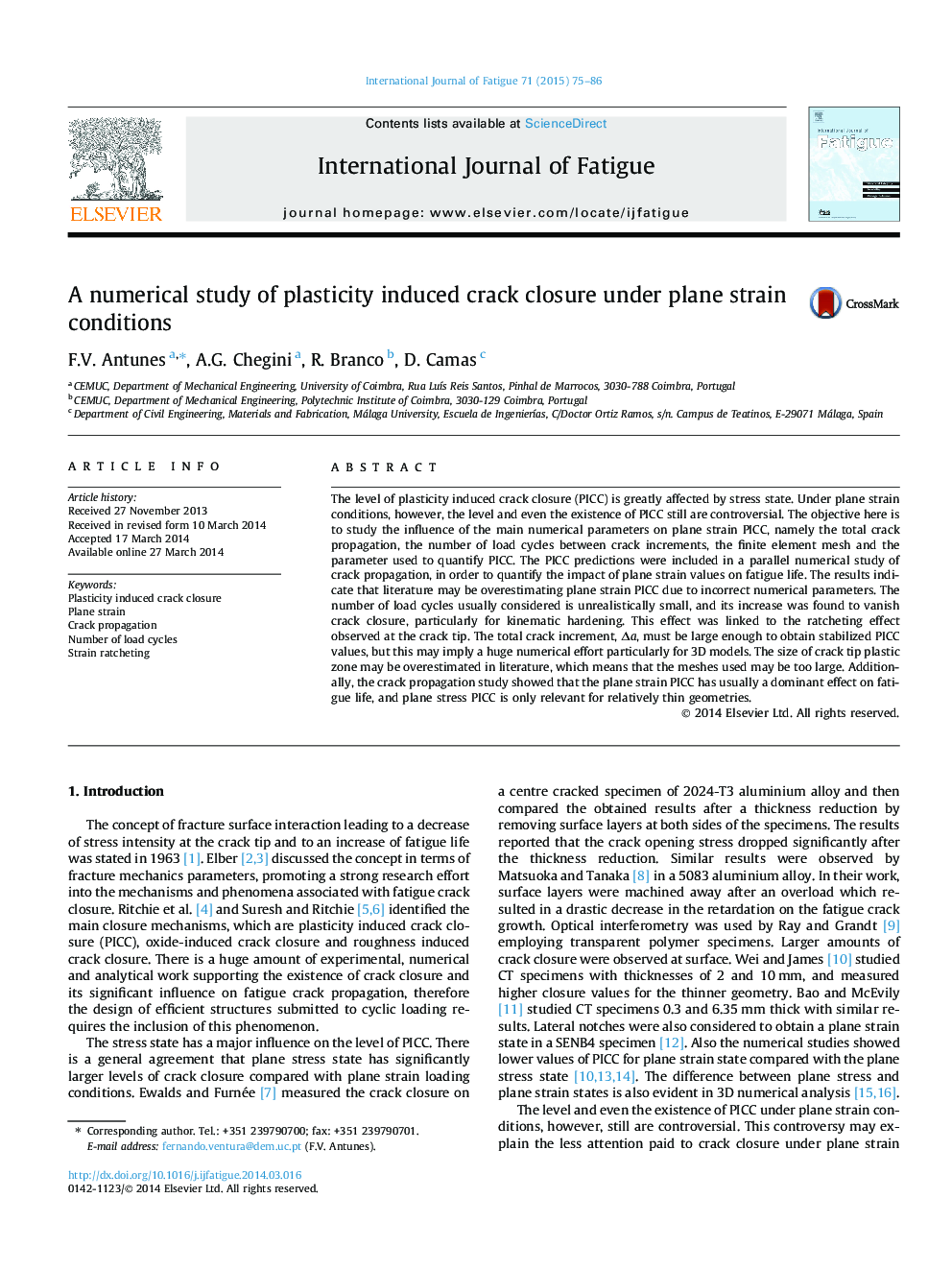| Article ID | Journal | Published Year | Pages | File Type |
|---|---|---|---|---|
| 775075 | International Journal of Fatigue | 2015 | 12 Pages |
The level of plasticity induced crack closure (PICC) is greatly affected by stress state. Under plane strain conditions, however, the level and even the existence of PICC still are controversial. The objective here is to study the influence of the main numerical parameters on plane strain PICC, namely the total crack propagation, the number of load cycles between crack increments, the finite element mesh and the parameter used to quantify PICC. The PICC predictions were included in a parallel numerical study of crack propagation, in order to quantify the impact of plane strain values on fatigue life. The results indicate that literature may be overestimating plane strain PICC due to incorrect numerical parameters. The number of load cycles usually considered is unrealistically small, and its increase was found to vanish crack closure, particularly for kinematic hardening. This effect was linked to the ratcheting effect observed at the crack tip. The total crack increment, Δa, must be large enough to obtain stabilized PICC values, but this may imply a huge numerical effort particularly for 3D models. The size of crack tip plastic zone may be overestimated in literature, which means that the meshes used may be too large. Additionally, the crack propagation study showed that the plane strain PICC has usually a dominant effect on fatigue life, and plane stress PICC is only relevant for relatively thin geometries.
